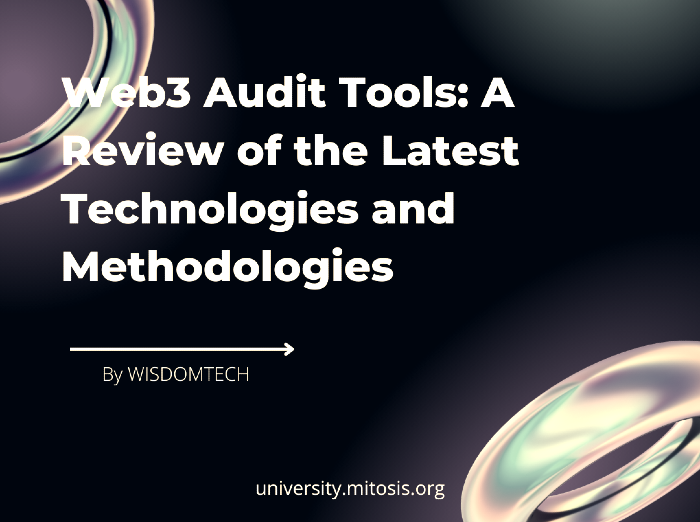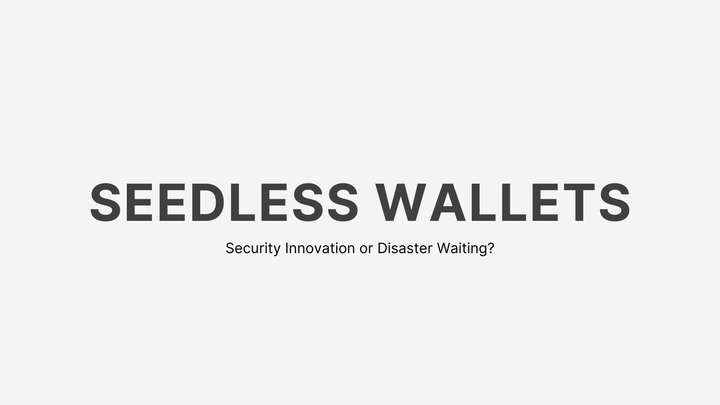Web3 Audit Tools: A Review of the Latest Technologies and Methodologies

As smart contracts handle billions in assets, the tools keeping them safe are evolving rapidly. Here's a deep dive into the technologies and strategies shaping Web3 audits today.
Introduction
In the traditional world, auditors pore over company ledgers and financial statements. But in the Web3 universe, the “books” are smart contracts and they don’t forgive mistakes. A single overlooked vulnerability can result in millions of dollars vanishing in an instant. Just ask the victims of The DAO hack in 2016, or the more recent Nomad bridge exploit in 2022.
Web3 audit tools have become the new vanguard of security in decentralized ecosystems. As DeFi protocols, NFTs, DAOs, and L2s boom, the demand for airtight, automated, and AI-augmented auditing systems has never been higher.
This article offers a comprehensive overview of the technologies and methodologies driving smart contract auditing in 2025 from legacy systems like MythX and Slither, to bleeding-edge AI-integrated platforms and on-chain formal verification methods.
The Evolution of Web3 Auditing
From Manual Review to Machine Intelligence
Early blockchain auditing heavily relied on manual code review by specialized teams. Tools like Oyente (developed in 2016) laid the groundwork for symbolic analysis of Ethereum smart contracts. But as smart contract complexity grew, so did the limitations of human-led reviews.
Enter the era of:
- Automated Static Analysis
- Dynamic Testing & Fuzzing
- Formal Verification
- Machine Learning & AI-based Scanners
- On-chain Real-time Monitoring
These technologies, when stacked and orchestrated correctly, now form the multi-layered audit stacks of top-tier projects.
Key Categories of Web3 Audit Tools
1. Static Analysis Tools
These tools scan code without executing it — identifying vulnerabilities based on syntax, known patterns, and control flows.
Popular Tools:
- Slither: Open-source tool developed by Trail of Bits. Fast and accurate at finding known vulnerabilities like reentrancy and delegatecall misuse.
- Mythril: Symbolic execution tool used to detect logic bugs and vulnerabilities.
- Securify: Developed by ETH Zurich, this tool uses formal methods to analyze code against compliance and violation patterns.
Pros:
- Fast
- Easy to integrate into CI/CD
- Doesn’t require contract deployment
Cons:
- Can produce false positives
- May miss complex logic flaws
2. Dynamic Analysis & Fuzzers
Dynamic tools interact with deployed contracts to observe behavior under different inputs, often revealing runtime bugs.
Popular Tools:
- Echidna: Property-based fuzzer that tests smart contracts like unit tests on steroids.
- Manticore: Symbolic execution plus concrete execution — useful for deeper coverage.
Pros:
- Finds bugs that static tools miss
- Great for verifying runtime properties
Cons:
- Slower than static analysis
- Requires test harness setup
3. Formal Verification Platforms
These tools mathematically prove that a contract behaves as intended, using logic-based assertions.
Key Platforms:
- Certora Prover: Used by Aave, Compound. It checks contracts against formal specifications in a custom language.
- K Framework: Highly rigorous. Used for Ethereum's KEVM and other formal semantics.
Pros:
- Mathematically rigorous
- High assurance for mission-critical code
Cons:
- Time-consuming
- Requires advanced knowledge in formal methods
4. AI and LLM-Powered Code Analysis
With the rise of AI tools like GPT-4 and CodeBERT, smart contract auditing has seen a new breed of AI-assisted analysis.
Key Platforms:
- ConsenSys Diligence AI: Integrates LLMs to explain vulnerabilities and assist in code review.
- OpenZeppelin Defender + AI Analysis Plugins: Automates bot protection with AI-based threat detection.
Emerging AI Features:
- Natural language summaries of risk
- Suggestive code refactoring
- Zero-day exploit detection by comparing novel patterns
5. Continuous and On-Chain Monitoring Tools
Auditing doesn’t stop after deployment. These tools monitor smart contracts in real-time for unusual behavior.
Notable Tools:
- Forta: A decentralized threat detection network that uses bots to monitor contract behavior.
- Chainbeat: Real-time observability for smart contracts, ideal for DAOs and governance audits.
- Tenderly: Transaction simulator + alert system to monitor smart contracts in production.
Use Cases:
- Detect protocol anomalies early
- Alert users or admins of potential attacks
- Feed data into insurance models
Methodologies in Modern Web3 Auditing
The Security Review Lifecycle
A full-featured audit isn’t just about running tools — it’s a methodology. Leading firms follow structured, repeatable processes:
- Specification Gathering
Understand protocol design, business logic, and invariants. - Threat Modeling
Identify possible attack vectors — both economic and technical. - Tool-Assisted Analysis
Run multiple scanners (e.g., Slither, MythX, Echidna). - Manual Code Review
Human auditors look for architectural flaws, logic bugs. - Remediation + Re-audit
Dev team fixes issues; auditors verify fixes. - Audit Report + Scoring
Detailed report issued; often published on GitHub or IPFS. - Post-Deployment Monitoring
Integration with Forta, Tenderly, and WatchPug for ongoing defense.
Audit-as-a-Service (AaaS)
Many protocols now integrate auditing as an ongoing service, not just a one-time event. Think:
- Periodic re-audits after each upgrade
- Continuous monitoring hooks
- Bounties and bug disclosure frameworks (Immunefi, HackenProof)
Top Audit Firms in Web3
- Trail of Bits – Elite team, open-source tool authors.
- OpenZeppelin – Maintainers of the OZ library, run Defender.
- Certik – CertiK is a pioneer in blockchain security, leveraging best-in-class artificial intelligence (AI) technology to protect and monitor blockchain protocols and smart contracts
- ConsenSys Diligence – ConsenSys Diligence is dedicated to enhancing the Ethereum ecosystem by promoting technical excellence, best practices in security, legal precautions, and ethical business practices.
- Hacken & Slowmist – Often used in cross-chain and Asian markets.
Emerging Startups to Watch
- Sherlock – Decentralized security protocol that stakes on audits.
- Code4rena – Crowdsourced competitive audits.
- Zellic – Rising star in cross-chain protocol audits.
- Runtime Verification – Formal methods specialists.
Ongoing Challenges
- False Positives from scanners frustrate developers.
- Lack of standardization across audit reports.
- Insider bias — some audits done for marketing, not security.
- Slow turnarounds during audit congestion periods.
Future Trends
- AI-CoPilots for Security: LLMs tailored for Solidity may offer real-time security hints in IDEs.
- Verifiable Credentials: Auditors may issue NFTs or zk-proofs of passed audits.
- On-chain Verified Contracts: Smart contracts with formally verified metadata directly on-chain.
- Bug Bounty DAOs: Community-driven security funded via treasury proposals.
- Security Score Aggregators: Like CoinGecko, but for contract audit status.
Conclusion:
In the world of Web3, smart contracts are the bank. And as recent exploits continue to show, unchecked assumptions can cost millions. Web3 audit tools from static analyzers to AI copilots offer the scaffolding needed to secure decentralized systems. But no single tool is a silver bullet.
The most resilient protocols are those that embrace layered security, combine automated tools with human review, and treat audits as an ongoing process, not a final stamp of approval.
As the Web3 space matures, the auditing ecosystem must grow with it smarter, faster, and increasingly autonomous. Because in this space, trust is good, but verified security is better.



Comments ()